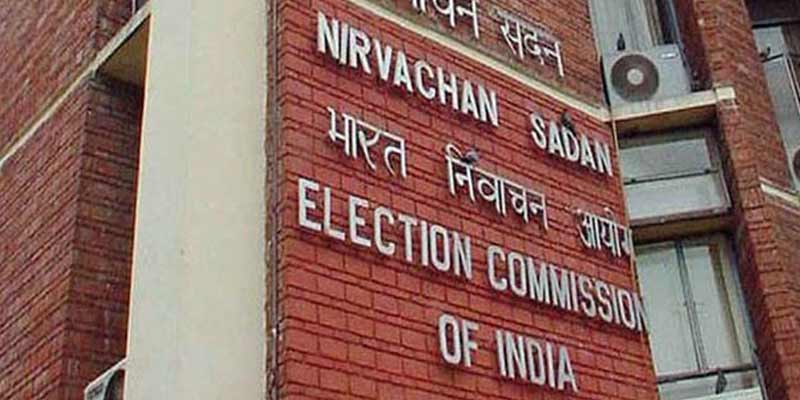- India
- Dec 21
Explainer / Delimitation in J&K
The Delimitation Commission on Jammu & Kashmir has proposed six additional Assembly seats for Jammu region and one for Kashmir.
For the first time, in Jammu & Kashmir, nine seats are proposed to be allocated for Scheduled Tribes out of 90 seats on the basis of population. Seven seats are proposed for Scheduled Castes. As many as 24 seats of the Assembly continue to remain vacant as they fall under Pakistan-occupied Kashmir (PoK).
Currently, Kashmir division currently has 46 seats and Jammu 37. The population of Jammu region is 53.72 lakh and Kashmir division 68.83 lakh, according to the 2011 Census.
What is delimitation?
• Delimitation means the process of fixing limits or boundaries of territorial constituencies in a country or a province having a legislative body.
• The job of delimitation is assigned to a high power body. Such a body is known as Delimitation Commission or a Boundary Commission.
Delimitation Commissions have been constituted in the past:
• In 1952 under the Delimitation Commission Act, 1952
• In 1963 under Delimitation Commission Act, 1962
• In 1973 under Delimitation Act, 1972
• In 2002 under Delimitation Act, 2002.
• The Delimitation Commission in India is a high power body whose orders have the force of law and cannot be called in question before any court. These orders come into force on a date to be specified by the President of India on this behalf. The copies of its orders are laid before the House of the People and the State Legislative Assembly concerned, but no modifications are permissible therein by them.
Delimitation in Jammu & Kashmir
• Delimitation in Jammu & Kashmir is being carried out as per the provisions of J&K Reorganisation Act, 2019 that split the state into two UTs of Jammu & Kashmir with an Assembly and Ladakh without an Assembly.
• Set up in March 2020, the Delimitation Commission is mandated to redraw the constituencies of Jammu & Kashmir which at present is under central rule.
• This year, in March, the panel headed by Justice (retd) Ranjana Desai, a former Supreme Court judge, was given one more year to complete its task.
• The delimitation is based on the Census of 2011 due to an amendment in the J&K Reorganisation Act.
• The latest delimitation in other parts of India has been done as per the Census of 2001.
• The last delimitation of J&K was done in 1995 when the former state was under the President’s Rule.
• Before J&K was reorganised in 2019, there were 46 assembly seats in Kashmir, 37 in Jammu and four in Ladakh.
• The number of assembly seats in J&K after delimitation will increase from 107 to 114 that includes 24 seats for Pakistan-occupied Kashmir (PoK).
Main points highlighted by the Commission:
• In the Union Territory, since the last delimitation, the number of districts has increased from 12 to 20 and number of tehsils from 52 to 207.
• The population density in the districts of the Union Territory varies from 29 persons per square km in Kishtwar to 3,436 persons per square km in Srinagar.
• The Delimitation Commission has categorised all 20 districts in three broad categories A, B and C giving a margin of +/- 10 per cent of average population per Assembly Constituency, while proposing allocation of the constituencies to the districts.
• For some districts, the Commission has proposed carving out of an additional constituency to balance the representation for geographical areas having inadequate communication and lack of public conveniences due to their excessive remoteness or inhospitable conditions on the international border.
Readjustment of seats after every Census
• Article 82 of the Constitution declares that upon the completion of each Census, the allocation of seats in the House of the People to the states and division of each state into territorial constituencies shall be readjusted by such authority and in such manner as Parliament may by law determine.
• Article 170 makes provision in regard to the seats in the State Legislative Assemblies and the division of the states into territorial constituencies.
• Article 327 gives specific power to Parliament to make elaborate provision for such readjustment including delimitation of constituencies and all other related matters.
• As per Article 82 of the Constitution of India, there has to be readjustment of seats after each Census (every 10 years) and such adjustment should be based on the population. However, the 42nd Amendment Act of 1976, provisions were included in Articles 55, 82, 170 and 330 of the Constitution not to make any changes to the number of Lok Sabha seats, Assembly seats, etc until the figures from the first Census after the year 2000 have been published. This ban on readjustment was extended for another 25 years (ie, upto year 2026) by the 84th Amendment Act of 2001.
• The 84th Amendment Act of 2001 also empowered the government to undertake readjustment and rationalisation of territorial constituencies in the states on the basis of the population figures of 1991 Census. Subsequently, the 87th Amendment Act of 2003 provided for the delimitation of constituencies on the basis of 2001 Census and not 1991 Census.
Manorama Yearbook app is now available on Google Play Store and iOS App Store

